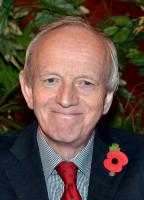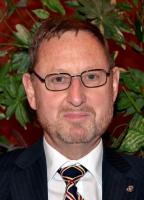Speaker Mike Clewes - The Flogging Preacher
Wed, Mar 19th 2025 at 12:00 pm - 2:00 pm
Mike told us about the Reverend Grimshaw in Haworth who 250 years ago would force his congregants out of the pub and into church. Speaker Finder Mike Clewes, Visitors Host, Grace & Banners Derek O'Hearne, Cash Desk Robert Allan
You may have heard plenty about Patrick Bronte but how much have you heard about one of his predecessors? William Grimshaw was one of the great Evangelical preachers alongside the Wesley brothers, but these days has largely been forgotten.
In 1800 the population of Haworth Township (Haworth, Oxenhope, Stanbury and Cross Roads with Lees was 3,164 and by 1851 it had grown to 6,848 as the industrial revolution took off. At its peak it had 19 places of worship (4 Anglican, 6 Baptist, 3 Wesleyan 2 Methodist & 2 Primitive Methodist, 1 Tabernacle and 1 Roman Catholic. So why did it have so many places of worship?
This explosion in different places of worship started under the curacy of William Grimshaw who was one of the early Evangelical preachers.
Little is known about his early life in fact nothing is known of his parents or siblings other than his place of birth Brindle near Preston on 14 September 1708. He went to the Grammar school of Blackburn at the age of five. Then at the age of 18 he was admitted to Christ’s College Cambridge where he studied to be a cleric.
His first curacy in 1731 was at Littleborough in the parish of Rochdale. For some unknown reason this was short lived, and he quickly moved in September 1731 to Todmorden. As was fairly common at the time Grimshaw chose the clergy not because of religious belief but because it offered a secure job in what was seen as a very respectable profession the same as doctors, solicitors and accountants.
In the early years of his tenure in Todmorden he was not very religious and spent the greater part of his time hunting, fishing, card-playing, revelling, and merry-making with the local gentry. He married Sarah Sutcliffe in 1735 but she died in 1739. Sarah was his great love, and he had 2 children with her. It is thought that her death was part of the reason that Grimshaw started to change his attitude to religion.
He occasionally suffered pangs of conscience, but these were ignored. Then a local hill farmer and his wife had a son after ten years of marriage. They were in despair when the child became sick, and, fearful for his life, so they arranged for his baptism when he was just five weeks old. But the child died on the day of his baptism. They turned to the Rev Grimshaw for solace and spiritual comfort. They found neither, Grimshaw being unregenerate was incapable of helping. His shallow advice was - visit friends, eat, drink and make merry.
This with the great loss he felt at the death of his wife made him think much more deeply about his chosen profession and what he should be doing. Over the next few years, he started to search within himself for an answer to his religious disquiet, but it was not until 1741 that he read The Doctrine of Justification by Faith written by the Puritan, John Owen that he turned to Evangelical preaching.
The following year he became the perpetual curate of Haworth Township which was a considerable increase in importance and salary. But the Haworth he found was a stinking cesspit and the only way it’s inhabitants could deal with this was by using their only time off work (half a day on Sunday) drinking and gambling.
As with quite a few parishes across England at the time the congregations had dwindled to almost nothing because the church didn’t really reflect their daily life. There were only 12 parishioners taking communion when he arrived.
His Solution - During the church service he would set the congregation singing Psalm 119 – the longest one. Then he would go down the church steps and into the Black Bull with a horse whip and drive the patrons up to the church. When this had happened a few times, it is said that you could see the patrons climbing out of the windows and jumping over the back wall of the pub to avoid him if they saw him coming. When he driven the drinkers back to the church the congregation were just coming to the end of the Psalm.
Unlike many of his peers Grimshaw changed his sermons so that they were understandable to the common man. Filling his sermons with threats of hell fire and damnation. It’s said that at one time he dressed up as the Devil & confronted a man who was refusing to marry his pregnant girlfriend to frighten him.
As his preaching became more Evangelical it started to resonate more with the parishioners and attendance at church started to grow. Eventually in winter numbers were 500 but in summer people would come from farther afield and he would preach outside to as many as 1200 people. It’s said that it eventually took 12 bottles of wine to deal with the numbers attending communion.
In the early days of his Evangelical preaching, he did not know John and Charles Wesley and when he heard of them was very cautious. Charles visited Haworth in 1746 but was not allowed to preach from the pulpit in the church. But by this time Grimshaw was also preaching a methodist type evangelical service at his parsonage. This wasn’t the parsonage of the Brontes which was built later but a small cottage at Sowdens farm which is about 200 yards along a path leading from just below the Black Bull and running parallel with the Dimples Road. Here he would preach in his kitchen, and he allowed Charles Wesley to address a meeting here.
Eventually he was persuaded and became great friends with the Wesley brothers. They placed such a great value on 'the Apostle of the North', as Grimshaw was known, that they arranged for him to become the leader of their movement should they predecease him which they didn’t.
He wasn’t very keen on the politics of the reformers and didn’t believe in the Disestablishment movement. He refused to go to London to discuss breaking away from the Anglican Church.
Initially he was not prepared to leave his parish. But eventually so many people were coming from other places to hear him speak that, unlike his peers, he was happy to occasionally leave his parish churches in the hands of his lay preachers and travel further afield. However, unlike Wesley he was not prepared to give up his parish and wouldn’t let the lay preachers give communion which he saw as very important task that only the curate could perform.
His travels took him as far afield as Barrow-in-Furness in the north and into deepest darkest Lancashire around Blackburn & Rossendale. The one time he went down to Norwich was to berate the habit that had grown up there of lay preachers giving communion. To his embarrassment when he got there 2 of the culprits were former protégés of his.
These meetings with the Wesley’s and other Methodists on his travels encouraged him to expand the alternative preaching that had been taking place at Sowden’s farm. He raised the funds to build the first Methodist chapel in Haworth. There was no thought of separation at this time, but he wanted to ensure that “the purer part of the congregation” was provided for in case his successors were not of the same persuasion as himself.
He also became the first Superintendent of the Great Haworth Round Circuit of Methodists. This organisation covered from Otley, Pateley Bridge & Birstall over to Preston and all the way up to Workington.
There were a lot of different views at this time. Although many early Methodists like Grimshaw and John Wesley were Anglican curates other Anglicans were strongly opposed to the fact that they were having joint roles in the church and in Methodism.
Initially Grimshaw was looked upon favourably by the Archbishop of York William Herring who viewed Grimshaw as an ideal incumbent as he tended to his parochial duties. The next Archbishop Matthew Hutton heard how he had increased the congregation and would not listen to Grimshaw’s critics. When Hutton was replaced by Archbishop Gilbert some of his peers tried again to get him disowned. But after listening to him preach for 2 hours Gilbert said, 'I would to God that all the clergy in my diocese were like this good man'.
In 1763 a “plague” (probably typhus) was affecting his parishioners and whilst attending to them he contracted the disease and died in in April of that year at the age of 55. He was buried next to his first wife in Luddenden church yard.
But his ambivalence between Anglicanism and Methodism continued in the village and 70 years later Patrick Bronte still struggled with why there should be such a difference between the two views and could frequently be found attending Methodist functions when they didn’t clash with his parish duties.
 Contact Michael Clewes about this page:
Contact Michael Clewes about this page:
'What We Do' Main Pages:
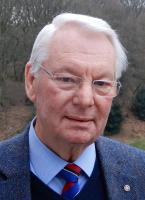
Coming under Community this part of the group exists to undertake environmental projects on behalf of the club.
more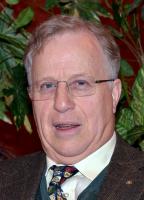
This committee provides the link with Rotary Internationals main charitable trust which primarily deals with projects having a global nature.
more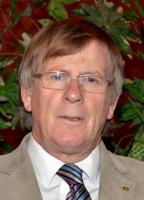
Rotary is not just about doing good deeds but also about enjoying yourself and this committee organises social activities. This page contains an archive of some of our activities.
moreThis committee works with the other committees to help them raise funds for their individual projects to support charities locally, nationally and internationally.
moreThis is the vehicle that donates the money that we have raised to the various good causes that we support. Its official name is The Rotary Club Of Bradford Blaize Trust Fund and its registered number with the Charity Commission is 514621.
moreThis committee organises social events and deals with the day to day running of the club.
moreThis committee exists to provide PR and communications between the members and also to provide links to non members through the web site and Facebook.
more

